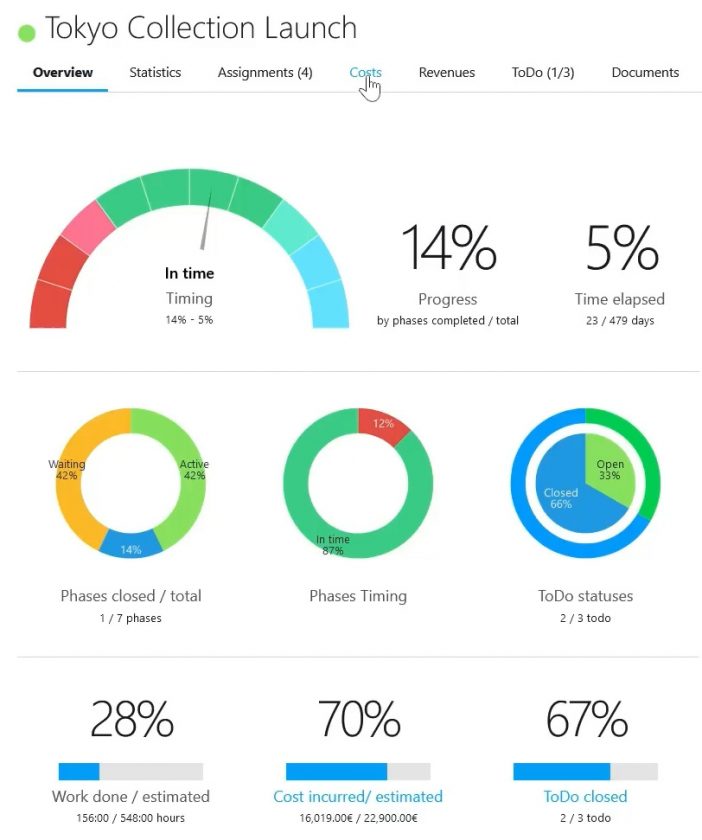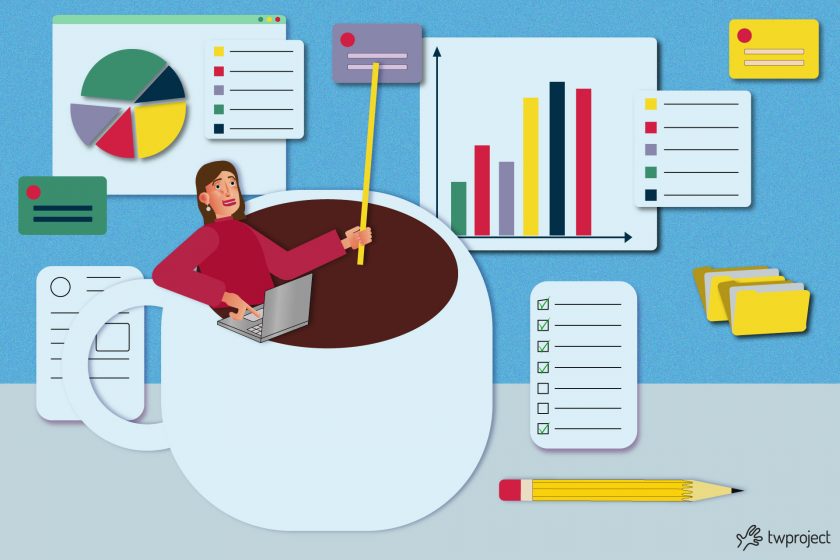With no adequate project management plan, your business will be vulnerable to chaotic management, vague objectives, inadequate resources, and frustrated employees.
As a matter of fact, unrealistic planning results in high risks that produce poor quality results from high costs.
This is why it is so important to make a comprehensive project management plan before the work begins.
In this article we will take a look at what a management plan is, what it is for, and how to implement it.
CONTENT
What is a project management plan?
The project manager creates the project management plan based on input gathered from the project team and key stakeholders.
A project management plan is a formal document that outlines how a project will be executed, monitored and controlled.
As work moves forward, project performance is benchmarked compared to the performance measurement baseline included in the project management plan.
Should a deviation from the baseline occur while the work is in progress, the project manager needs to address it by making adjustments to correct it.
If these adjustments should fail to correct the deviations, formal baseline change requests become mandatory.
Project managers spend a great deal of time ensuring the achievement of objectives., ensuring that all stakeholders get the hoped-for benefits.
As well as proper planning, a project manager’s skills also consist of efficiently controlling the project and ensuring that project deliverables are on time and that the project proceeds according to the project management plan.
How to make a project management plan
There is no unique model that works for all projects.
Each management plan must be tuned to the given industry and project circumstances.
Yet, typically, here is how a management plan is made:
1. Identify the goal of your project
To build anything meaningful, the first step is to lay the right foundation. Here are the questions you need to ask:
- Why is this project being created?
- What is the goal?
- How will it be measured?
- What is a successful scenario?
- How will this affect stakeholders?
2. Trace the framework
This following step must detail how things will proceed and what the project will look like once it has started.
It is critical that a project does not overstretch otherwise the team will never achieve its goals.
The scope of the project should include deliverables and scheduling of results; in fact, all team members should know what is to be delivered and when.
3. Visually trace your project
A thoughtfully crafted project schedule is the key to success.
Without this, your project will likely collapse into a chaos of missed deadlines, mismanagement, and frustration.
In this case, planning tools such as the Gantt chart and time sequences can streamline the creation of amanagement plan.

By visually outlining each activity in the project, it will allow for faster addition of important milestones and search for any dependencies or conflicts.
4. Identify the structure of your project team
Assembling a team and aligning them with your project vision is not so simple.
This can only be achieved through good communication, which is why good project documentation is paramount.
An organizational chart can help include some necessary information such as team hierarchy, everyone’s responsibilities, and contact information for each member.
5. Risk management
A key task of a project manager is to pinpoint the factors that could potentially jeopardize your project, and devise solutions to address them.
A risk management plan typically begins by listing all the elements of a project, and then a risk breakdown structure allows to organize them both hierarchically and by category.
With a dynamic and always up-to-date project monitoring tool like Twproject, the project manager will be able to keep an eye on any critical aspect of project progress.

This will make it easier to find them, manage them, and figure out a quicker solution.
6. Plan communication
One thing that project managers often overlook is having a communication management plan. This outlines how the project team will communicate with stakeholders.
Too often, by default, project communication consists in ad hoc emails or last-minute meetings, but we can prevent this by planning ahead by drafting a structured communication plan.
This form of reporting is valuable for providing regular communication of clear and consistent updates about project progress.
This can also help in detecting and flagging problems before they arise, build trust with stakeholders, and make it easier to reflect on project performance.
Therefore, it becomes clear how a project management plan is key for a successful project, as it will be able to drive work and keep it on track.
Who can help you make a good project management plan
As previously mentioned, there are a number of management plan templates based on your industry, company culture, and project type.
In this case, a good, comprehensive, feature-rich project management tool, can help in choosing the best plan template and drafting a complete and comprehensive document.
This way, the project manager will be able to ensure that actual progress stays on track with planned progress.
If you choose Twproject, planning will be much easier, thanks to its dynamic tools for calculating risk, workload, and budget.
Thanks to its statistics pages and notifications you can always have the situation under control and carry out your management plan in a pleasant and satisfying way.
We offer you a 15-day free trial as well as our efficient support service that will personally guide you through the composition of your plan. What are you waiting for? Start now!




